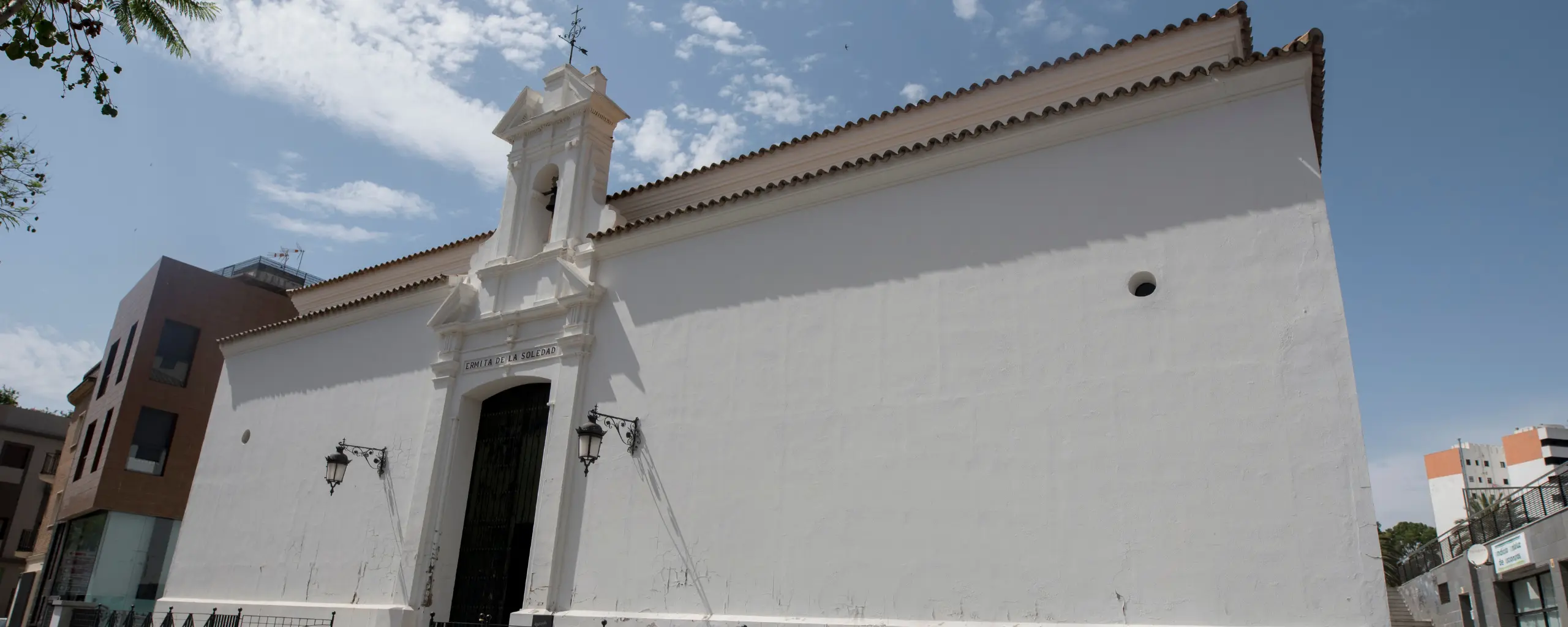It is also difficult to determine its foundation and everything around it is conjecture. Actually the hermitage that today is open to worship and hosts the brotherhood of the Holy Burial dates from the eighteenth century, as in the chronicles of the city of Huelva after the Lisbon earthquake of 1755 spoke of the few alterations suffered in the chapel. We can speak then of the existence of two possible buildings different in time and styles.

It is a small baroque church with a rectangular floor plan with a single nave and three side chapels. It was built in the 15th century under the patronage of the apostle Santiago. Its exterior is austere due to its recent reconstruction and its various functions throughout its history.
The present building is formed by a rectangular nave whose access is made through stairs that gives way to the entrance door formulated under a very low arch delimited by two lateral pilasters and a split pediment in whose center is inserted a belfry with lateral corbels and finished off by a pediment without closing. As for the nave, it closes in flat chevet having in its presbytery area a square crypt with ramp access, used as the last resting place of Don Pedro de Guzmán y Quesada and family. The main chapel must have been covered with an altarpiece where the images of Santiago and Nuestra Señora de la Soledad supposedly appear.
The building is completed with three side chapels located on the left wall of the church. The illumination system of this church came from some oculi located in the entrance area and the door of the building.
Throughout the centuries, the hermitage of the Soledad had different uses. It had the honor of being, since the 17th century, the seat of the Chair of Latinity and Grammar, created by Don Diego de Guzmán y Quesada.
Throughout the centuries, the hermitage of the Soledad had different uses. It had the honor of being, since the 17th century, the seat of the Chair of Latinity and Grammar, created by Don Diego de Guzmán y Quesada.
In 1854, the building became a hospital. Later, around 1869, the building became the property of the city council, after which it was abandoned until 1880, when Christian schools were created, whose works lasted from that same year until 1885. Years later the use of the chapel would go from being an academy and rehearsal place of the municipal band to a shelter for passers-by, until the early 80’s of the last century, recovered by the bishopric of Huelva, it was concluded to demolish it in its entirety due to the state of neglect in which it was found, a proposal that was criticized by the people, thanks to which it was preserved what is undoubtedly one of the oldest temples in the city.
The rehabilitation began in 1992. Today it is the headquarters of the Brotherhood of the Santo Entierro, which in this building houses its processional carvings, among which are the Cristo Yacente, whose head dates from before 1936, the Virgen de las Angustias (1958) and the Virgen de la Soledad (1944), carvings by the sculptor León Ortega.
It can be visited:
– Monday to Friday from 18:30 – 20:30 h.